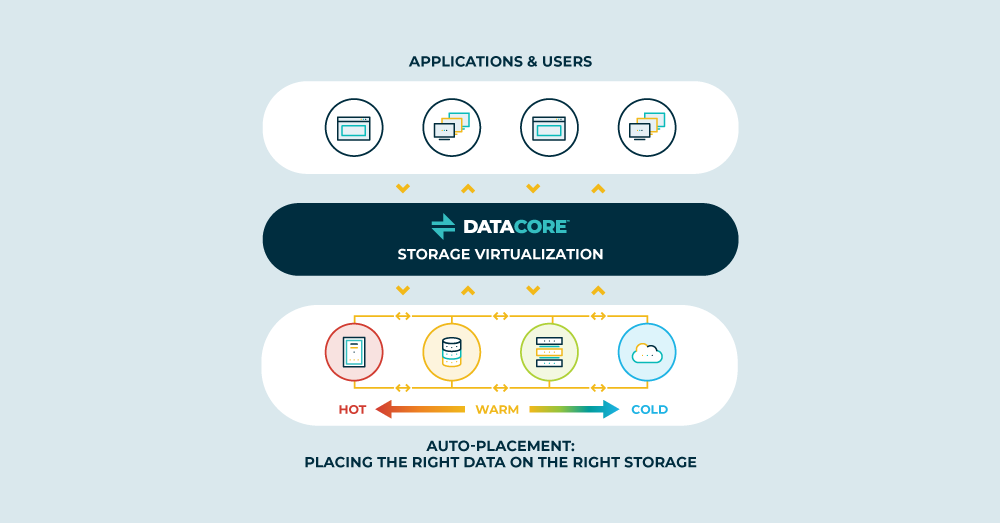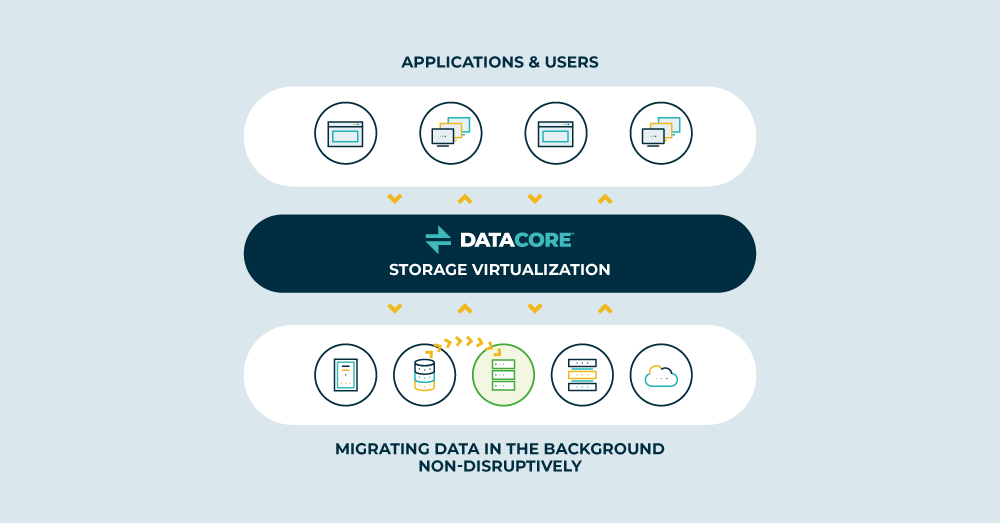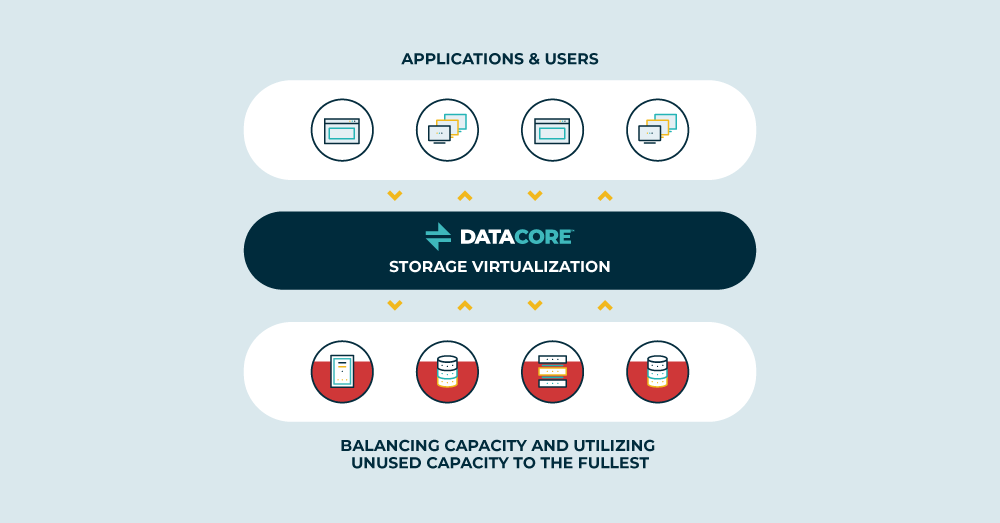Hospitals, medical laboratories, life sciences and pharma research institutes, and insurance companies are all tackling an exponential rise in digital data. This includes both structured data generated by healthcare applications in the form of electronic medical and health records (EMR/EHR) and protected health information (PHI), and unstructured data such as scans, X-ray images, videos, and medical documents. Within the healthcare industry, IT departments are tasked with providing a scalable storage infrastructure for this growing data, and a reliable way to keep that data highly available, accessible, and secure at all times. However, this is often far easier said than done, given the common challenges such as budget constraints, resource deficits, and stringent compliance policies.
As healthcare organizations seek to manage the onslaught of data thrown at them for storage and archiving, IT teams are faced with a variety of issues such as:
- Disparate storage management, which leads to storage silos and capacity inefficiencies
- Surging capacity demands, which raise storage procurement costs
- No centralized visibility across multi-vendor storage platforms
- Various management tools which require manual administration and overhead in order to train IT staff
- The inability to adapt to changing business needs and technology innovation
- Difficulty ensuring continuous operations due to disruptions in data accessibility
In a mission-critical and time-sensitive environment like healthcare – where the IT infrastructure is critical in ensuring patient care – it is imperative to enable fast and continuous data access. This is one of the reasons why healthcare organizations are looking to consolidate their data storage infrastructure for centralized management, data access, and backup.
Storage Virtualization: A Critical Component of Your Consolidation Strategy
Storage virtualization is a key technology that IT organizations use in their storage/IT consolidation efforts. Storage virtualization abstracts the storage management software functions from the underlying hardware infrastructure. Data can be centrally and uniformly managed across disparate storage platforms. This helps remove storage silos and simplifies the administration of storage management tasks.
Software-defined storage (SDS) solutions that utilize storage virtualization offer flexibility to consolidate, modernize, expand, and optimize the storage layer. By acting as a central, vendor-agnostic storage controller, IT teams can control how they store, protect, and access data across diverse storage equipment and hybrid storage infrastructures.
Let us examine four common scenarios where storage virtualization technology plays a crucial role in a healthcare storage consolidation strategy.
#1 Storage Capacity Pooling and Load Balancing
IT departments frequently face the challenge of running out of storage capacity and then procuring budget to add more hardware. Capacity inefficiency is compounded when storage platforms from different suppliers end up being managed in silos, without the ability to optimize utilization across multi-vendor devices.
Storage virtualization decouples the hardware from software-based data services. All the capacity across different storage devices and manufacturers are aggregated under a virtual storage pool. This helps reclaim disk space from each storage system in the pool. IT teams can now centrally manage, provision, and load-balance resources according to business requirements.
Virtual disks are created from the storage pool and allocated to those applications requiring storage. The applications do not need to be mapped to the individual storage device that is providing them with storage. From an application’s perspective, it is simply getting storage allocated from the storage pool. Administrators can also thin-provision storage to applications, avoiding the need to block a lot of physical disk space initially. The fact that capacity can be provisioned and reclaimed on-demand optimizes capacity utilization and results in greater resource efficiency for the consolidation project.
#2 Automated Data Placement
No organization wants to fill up its primary and performant storage devices with inactive/cold data. A siloed storage architecture will most certainly lead to this. When the storage layer is virtualized and devices are pooled, storage tiers can be created and data placement can be made to be both smart and automated.
Based on the data access temperatures, hot data can be made to tier to primary storage (for example, NVMe or flash-based storage), while infrequently accessed warm and cold data can be moved to secondary storage tiers (for example, commodity hardware).

Storage virtualization solutions dynamically and continuously keep moving data according to machine learning-driven policies and ensure that the right data is always stored on the right storage and made available for access at the right time from anywhere. As IT teams plan to consolidate their storage infrastructure, automated data placement helps to optimize capacity usage, free up disk space on premium storage, and avoid performance hotspots.
#3 Seamless Data Migration
It is often during consolidation projects that organizations choose to review or refresh their storage infrastructure, upgrade, or replace legacy and expensive equipment with commodity hardware, and even install HCI servers to replace bulky servers and storage arrays. Typically, these significant changes in storage hardware would require data to be migrated from the old device to the new device, which involves a lot of manual work in terms of shutting down applications, disconnecting storage, installing new hardware, reconfiguring settings, etc. This is a painful and costly forklift process that not only adds to resource overhead, but also causes downtime for the application until the storage is reconfigured and operational.
Storage virtualization tools allow IT teams to seamlessly add new storage capacity to the virtualized storage pool with existing storage devices. Administrators can then easily migrate data between the old device and the new device – without any downtime for the application or disruption to the business. Once the migration is complete, the old hardware can be taken out of the storage pool and then decommissioned. The entire process is often so transparent that the applications and end users accessing data are never affected.

Given the ultimate flexibility of storage virtualization to work with any storage hardware platform, healthcare organizations can have a choice of hardware based on pricing, performance, support, and other factors. Without being locked in to any one hardware vendor, IT can integrate new technologies into the existing infrastructure to best meet their evolving business goals and priorities.
#4 Ensuring Business Continuity
As organizations consolidate their storage and data centers, it is critical they prepare for outages and hardware failures. It is prudent to plan out data redundancy and protection mechanisms to ensure high availability for data in case of downtime.
DataCore storage virtualization solutions have built-in capabilities to replicate data both synchronously (locally and across stretch clusters) and asynchronously (across disaster recovery sites). Automatic failover in the event of storage downtime and consequent resynchronization, and failback to a mirrored copy of data on a secondary storage location, help ensure business continuity.
Conclusion
These are just some of the common use cases where DataCore’s SDS solutions leveraging storage virtualization technology are able to help IT organizations. Additionally, DataCore SDS solutions offer many other automated capabilities and data services that work across heterogeneous and hybrid storage infrastructures. From a single pane of glass, healthcare IT teams can manage storage provisioning, optimization, load balancing, replication, data migration, and so on, ensuring the success of storage and infrastructure consolidation initiatives. A healthcare storage virtualization approach also aids in managing the surging data growth by building a resilient and scalable data storage infrastructure while maintaining uptime and adhering to compliance regulations.
